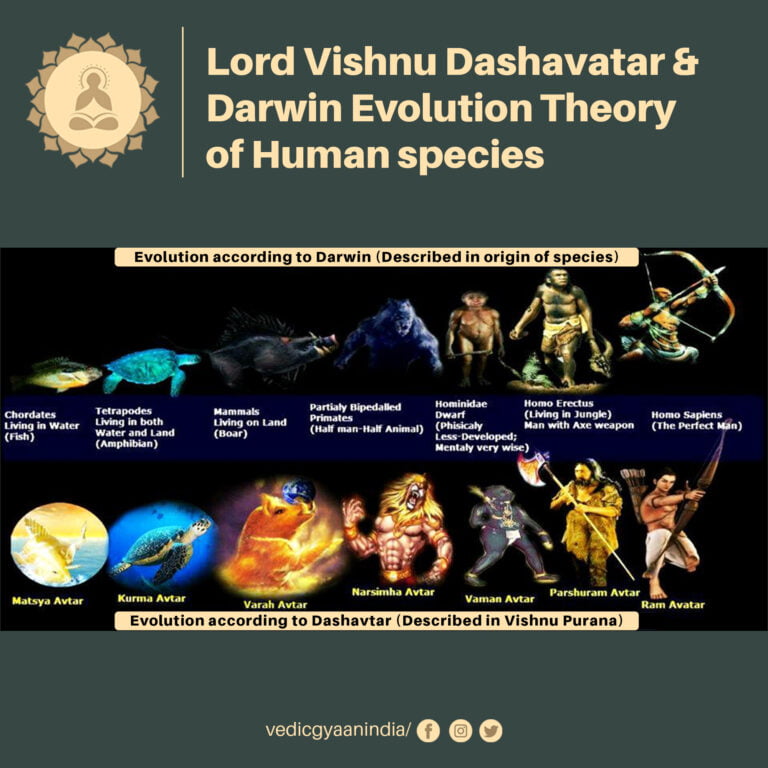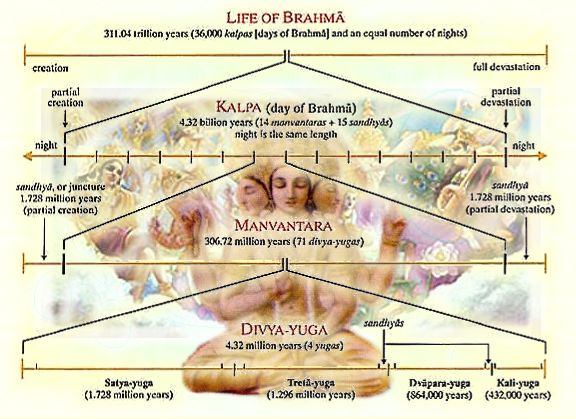The Evolution Story as per Hindu Mythology
Human Origins Traced to the Sea
Fish are considered to be the first vertebrates that transitioned from water to land. According to Hindu mythology, the first Matsya avatar of Lord Vishnu represents this stage of evolution. In the Vedic scriptures, life is said to have originated in the seas and oceans. The fish (Matsya) avatar supports the scientific theory that the first living organisms were aquatic in nature and had gills to breathe underwater. Over generations of evolving in water, fish developed the ability to survive on land for short periods through adaptations like developing lungs alongside gills.

Transition from Water to Land Began
The next Kurma avatar signifies the evolution of amphibians that could reside both in water as well as on land. Having traits of both aquatic and terrestrial animals, amphibians played a pivotal role in the transition of life from seas to lands. Characteristics like moist skin helped amphibians preserve water and survive outside of aquatic environment for some time. Scientific studies agree that amphibians like frogs and salamanders were instrumental in the shift of early life from oceans to dry surfaces through natural selection.
Primitive Life Evolved on Land
Varaha, the wild boar avatar, alludes to the early primitive land animals at the next phase of evolution. Mammals like dinosaurs that inhabited forests and grasslands represent this avatar. Lacking high intelligence, these creatures relied on physical strength and weapons like tusks or claws for survival against enemies and climate. Paleontological evidence validates the existence of large reptiles prior to the emergence of humankind around 65 million years ago. Their fossils are frequently excavated from various parts of the world.
Early Humans Started Developing Intelligence
Narasimha, the half-man half-lion avatar, is speculated to depict evolution of early Homo species that exhibited traits of both animals and intelligent behavior. Scientific data confirms primitive humans like Homo Erectus inhabited earth about 1.8 million years ago in Africa. Compared to their predecessors, these human ancestors displayed increased brain size and ability to craft tools - qualifying as the smartest living beings on the planet at that point. Findings from archaeology align with this mythological interpretation of evolving mankind.
Society and Civilization Began Forming
According to Hindu scriptures, the Vamana avatar represents shorter human population or early Homo Sapiens developing larger brains and other skills essential for civilization. Advancements in tool-making, use of fire, and group-living enabled forming of smaller communities and tribes. Anthropological research validates lifestyle changes in hominins around 300,000 years ago which heralded the journey to modern society. Vamana marks a crucial juncture when intelligence surpassed mere physical attributes deciding survival of the human species.
Humans Learned Living in Harmony with Nature
The Parashurama avatar portrays humans reaching ecological balance living in forests and hills peacefully. In touch with mother earth, these people relied on nature for subsistence without exploiting her gifts. Archaeological digs at sites inhabited by Neanderthals and early Homo Sapiens corroborate sustainable food gathering practices and use of natural resources with care. Interaction with flora and fauna taught respecting the fragile environment our species depends on for prosperity. Even today indigenous communities sustain harmonious existence demonstrating this wisdom.
Moral Codes and Relationships Evolved
The Ram avatar signifies evolution of moral, social and familial bonds essential for well-adjusted communities. Establishing virtues like truth, courage and keeping promises; laws regarding duty, marriage and property; as well as respecting all beings equally paved the way for orderly human settlements. Anthropological studies at pre-historic localities throw light on cultural practices developing around this time. Equitable relationships, role of emotions, and spirituality emerging in group dynamics mark the Ram avatar period of tremendous socio-cultural progress.
Civilization Matured with Knowledge and Organization
Krishna avatar depicts a phase where intellectual and political advancements enriched society. Mastering farming, crafts, governance and warfare alongside philosophical, devotional and artistic excellence depicted a burst of innovative human potential. Archaeological data confirms stratified societies arising in the Indus Valley, Egypt and Mesopotamia with specialized jobs, infrastructure projects and trade networks. Here humanity displayed maturity balancing emotion and reason, spirit and matter, individual freedom and collective obligations.
Inner Peace Complemented Outer Progress
The Buddha and Mahavira avatars established seeking eternal bliss within alongside improving material conditions without. Preaching compassion, non-violence and liberation of soul from cycles of birth and death, these enlightened beings reminded the eternal verities of life are not dependent on transient worldly gains. Their message of finding beauty in simplicity, truth in silence, and liberation in detachment still inspires millions globally. Spirituality complementing science presents a holistic model of human progress valued across diverse cultures.
Environment Responsibility Preserves Life Itself
Kalki, foretold to end the current epoch and reinstate dharma, conveys humanity’s role as caretakers safeguarding nature and other species. Mistreating planet earth and her resources will endanger future generations’ access to basic needs like food, water and shelter. Environmental preservation through sustainable practices is vital to preventing catastrophic climate change and biodiversity loss. Understanding our inextricable bond with Mother Nature will help guide future evolution in a prudent, compassionate manner for all inhabitants of this shared world.
